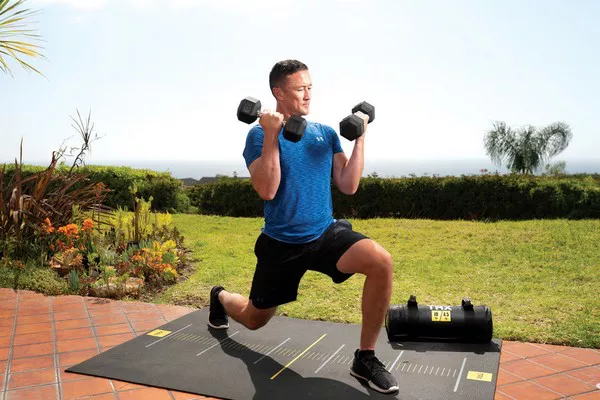Embarking on a journey to shed belly fat is a common fitness goal, and individuals often find themselves at the crossroads of choosing between cardio and strength training. In this comprehensive exploration, we delve into the nuanced dynamics of these two approaches, aiming to unravel the mystery behind the most effective strategy for conquering stubborn belly fat. Whether you’re a cardio enthusiast, a strength training advocate, or someone seeking the perfect synergy between the two, this guide aims to provide clarity and empower your fitness decisions.
Understanding Cardio
Cardiovascular exercise, commonly known as cardio, has long been heralded as a potent tool for torching calories and promoting overall cardiovascular health. From brisk walking and running to cycling and dancing, cardio encompasses a range of activities that elevate your heart rate and increase oxygen consumption. The calorie-burning nature of cardio makes it an attractive option for those aiming to create a calorie deficit, a fundamental principle for weight loss and fat reduction.
Cardio workouts are characterized by their ability to engage large muscle groups, leading to increased energy expenditure during and after the exercise session. This phenomenon, known as excess post-exercise oxygen consumption (EPOC), contributes to continued calorie burning even after you’ve completed your cardio workout. For individuals specifically targeting belly fat, engaging in regular cardiovascular exercise is thought to contribute to overall fat loss, including in the abdominal region.
The Strength Training Advantage
On the other side of the fitness spectrum, strength training emerges as a transformative force in reshaping the body’s composition. Unlike cardio, which primarily focuses on burning calories, strength training centers around building and toning muscle mass. While cardio may have the immediate calorie-burning edge, strength training offers a unique proposition: the ability to sculpt lean muscle that can contribute to a more defined and toned appearance.
Strength training exercises, such as weightlifting and resistance training, place stress on targeted muscle groups, prompting them to adapt and grow stronger. This process of muscle hypertrophy not only enhances overall strength and functionality but also contributes to an increased basal metabolic rate (BMR). A higher BMR means that your body expends more calories at rest, creating a favorable environment for long-term fat loss.
Belly Fat
As the fitness community grapples with the quest to banish belly fat, the concept of spot reduction often enters the conversation. Spot reduction refers to the idea that targeting specific areas of the body through exercise can lead to localized fat loss. In the context of belly fat, individuals may wonder whether consistent cardio sessions or dedicated strength training routines can effectively melt away excess abdominal fat.
However, scientific consensus suggests that spot reduction is a complex and elusive goal. Numerous studies indicate that while exercise, including both cardio and strength training, contributes to overall fat loss, it may not necessarily result in preferential fat reduction in specific areas. Genetics, hormones, and individual body composition play pivotal roles in determining where the body sheds fat. Therefore, the effectiveness of cardio or strength training for reducing belly fat may vary from person to person.
The Cardio-Weight Connection
Rather than framing the cardio vs. strength training debate as an either-or scenario, fitness experts increasingly advocate for a holistic approach that leverages the benefits of both modalities. Cardio and strength training, when strategically combined, create a synergistic effect that addresses various aspects of fitness and fat loss.
Cardio exercises contribute to the calorie-burning equation, aiding in the creation of a calorie deficit essential for weight loss. Simultaneously, strength training builds and preserves lean muscle mass, influencing the body’s composition and metabolic rate. The marriage of these two modalities offers a well-rounded fitness strategy, promoting cardiovascular health, muscle development, and an enhanced potential for fat loss.
Tailoring Your Fitness Blueprint
When contemplating the ideal approach to conquer belly fat, it’s crucial to recognize the significance of individualization. Each person’s body responds uniquely to different forms of exercise, and factors such as fitness level, preferences, and existing health conditions should inform the choice between cardio and strength training—or a blend of both.
For those inclined towards cardio, incorporating high-intensity interval training (HIIT) can amplify calorie burn and potentially enhance the metabolic impact post-exercise. HIIT involves short bursts of intense activity followed by periods of rest or lower-intensity exercise. This approach can be particularly time-efficient while delivering robust cardiovascular benefits.
Conversely, avid proponents of strength training may opt for a well-rounded resistance training program that targets major muscle groups, including the core. Engaging in compound exercises, such as squats, deadlifts, and overhead presses, not only challenges the body comprehensively but also recruits multiple muscle groups, contributing to a holistic fitness routine.
Nutrition
Beyond the realms of exercise, the role of nutrition looms large in the pursuit of shedding belly fat. Regardless of whether your fitness journey leans towards cardio, strength training, or a blend of both, maintaining a balanced and calorie-conscious diet is paramount. The principles of a healthy diet—comprising whole foods, adequate protein, fiber-rich vegetables, and controlled portions—align with and amplify the benefits of your chosen exercise regimen.
The Verdict
In the cardio vs. strength training discourse, the prevailing wisdom leans towards embracing a balanced and diversified approach. Rather than fixating on one modality, individuals can maximize their fitness outcomes by integrating both cardio and strength training into their routines. This not only promotes comprehensive physical health but also enhances the likelihood of sustained fat loss, including in the stubborn areas around the belly.
As you embark on your fitness journey, consider consulting with fitness professionals or healthcare providers to tailor a plan that aligns with your goals, preferences, and any underlying health considerations. Remember, the key to long-term success lies in cultivating sustainable habits that support your overall well-being. Whether you’re lacing up your running shoes for a cardio session or picking up weights for a strength training workout, each step contributes to a healthier, more vibrant you.
[inline_related_posts title=”You Might Be Interested In” title_align=”left” style=”list” number=”6″ align=”none” ids=”3561,3559,3494″ by=”categories” orderby=”rand” order=”DESC” hide_thumb=”no” thumb_right=”no” views=”no” date=”yes” grid_columns=”2″ post_type=”” tax=””]
































